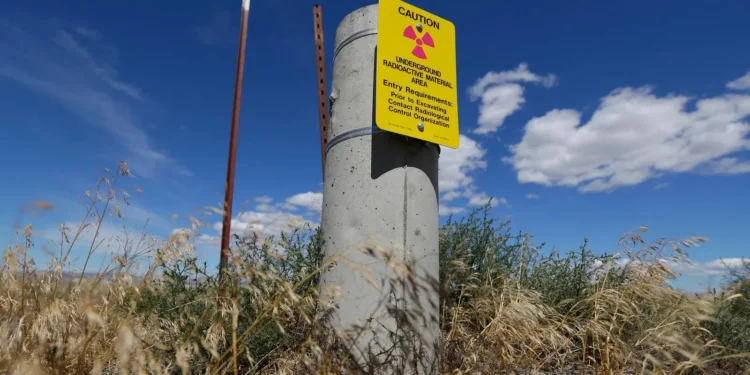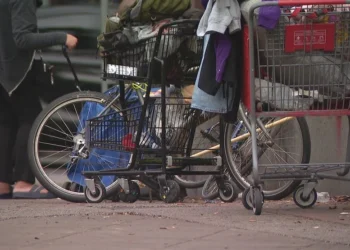Washington state regulators issued the final permit Wednesday allowing the Hanford Nuclear Reservation to begin transforming liquid nuclear waste into glass, marking a milestone in cleaning up the nation’s most contaminated nuclear site after decades of preparation and billions in investment.
The Hanford Waste Treatment and Immobilization Plant will remove waste from underground tanks, mix it with additives in a crucible, and heat the mixture above 2,000 degrees Fahrenheit. The substance cools in stainless steel vats and solidifies into glass, still radioactive but far more stable for long-term storage and less likely to contaminate soil or the nearby Columbia River.
“We are at the precipice of a really significant moment in Hanford’s history,” said Casey Sixkiller, Washington State Department of Ecology director.
The 600-square-mile reservation near the confluence of the Snake and Columbia rivers was selected in early 1943 for plutonium production due to its isolation, cold water access, and hydroelectric power. The U.S. government displaced roughly 2,000 residents to create the secret Manhattan Project facility.
Tens of thousands of workers responded to recruitment ads nationwide, building the world’s first full-scale plutonium production reactor. Most remained unaware of their work’s purpose until nuclear bombs were dropped on Hiroshima and Nagasaki in August 1945.
Hanford eventually operated nine nuclear reactors producing plutonium for the nation’s nuclear arsenal. The last reactor shut down in 1987. Two years later, Washington state, the U.S. Department of Energy, and the EPA reached a cleanup agreement.
Seven reactors have been “cocooned” to contain contamination until radiation drops sufficiently for dismantling near century’s end. The site contains 177 underground tanks holding 56 million gallons of highly radioactive and chemically hazardous waste. The tanks exceeded their 25-year projected lifespan, with more than one-third having leaked previously and three currently leaking.
During plutonium production years, Hanford dumped effluent directly into the Columbia River and ineffective containment ponds, contaminating groundwater and the wildlife food chain, according to a 2013 government assessment.
Current cleanup operations operate on a $3 billion annual budget. Construction on the waste treatment plant began in 2002, with over $30 billion spent to date.
The Energy Department faced an October 15 deadline to begin converting stored waste to glass per a cleanup schedule and consent decree involving the EPA and Washington state. Initial processing will include pretreated radioactive cesium and strontium.
Plans call for two facilities: the now-approved plant for low-level nuclear waste after repeated delays, and an adjacent facility for high-level waste still under construction.
The Energy Department’s September firing of Roger Jarrell, main Hanford cleanup overseer, prompted concerns about Trump administration commitment. Democratic Sen. Patty Murray said Energy Secretary Chris Wright indicated plans to stall vitrification operations.
Governor Bob Ferguson, joined by tribal leaders and labor representatives, threatened legal action over potential delays. Wright insisted the department changed nothing, and a deputy signed paperwork September 17 allowing vitrification to proceed.
“Although there are challenges, we are committed to beginning operations by October 15, 2025,” Wright stated last month. “As always, we are prioritizing the health and safety of both the workforce and the community.”
Ferguson urged federal follow-through following state approval. “Our state has done our part to start up the Waste Treatment Plant,” he stated. “Now the federal government needs to live up to its responsibilities and clean up what they left behind.”
The Energy Department said ahead of a government shutdown it could continue operations one to five days, after which work would cease unless “related to the safety of human life and the protection of property.”







